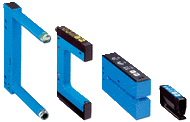SICK has been blazing a trail in the field of opto-electronics for decades and is currently the technological and market leader in many areas of industrial sensors. In recent years, SICK has transferred its sensor knowledge from the field of opto-electronics to inductive proximity sensors. Today, it offers a broad portfolio of products serving the needs of this specialist area. These sensors are in use worldwide, for example in a pumped storage plant in China.
Millions of inductive sensors are currently in use in virtually all conceivable industries. They detect metal objects without contact, and are characterized by a long service life and optimum resistance to icy cold and extreme heat alike. With the latest ASIC technology, sensors from SICK offer the ultimate in precision and reliability - from cylindrical or rectangular standard sensors with single, double, or triple operating distance to special sensors for use in the food sector or in harsh environments.
Latest News
fork sensor supplier
Jul 26, 2021Fork sensors

SICK fork sensors combine senders and receivers in a single housing, meaning that they can be adjusted quickly. Thanks to the precise, focused light beam and the high detection accuracy, the sensors also detect very minor light attentuation differences. Many different fork sizes, straightforward mounting, and exceptionally high ambient light immunity are just some of the advantages of these fork sensors.
Safety relays supplier
Jul 26, 2021
The wide range of safety solutions from SICK – from a single-channel emergency stop pushbutton to a safety laser scanner with PNP outputs – can be connected to safety relays. Safety relays are ideal for flexible and cost-effective machine integration. The extensive portfolio of safety products from SICK offers the right solution for virtually any application.
contrast sensor supplier
Jul 26, 2021Contrast sensors

Contrast sensors are primarily used in packaging/printing machines for the detection of printed or control marks. SICK's line of KT contrast sensors detects even the smallest contrasts at the highest speeds, such as print marks on foils or packaging. They detect minute grayscale variations between the mark and the background on matte, shiny or transparent surfaces. A variety of device types with different contrast resolution methods and teach-in versions are available to meet wide-ranging requirements.

